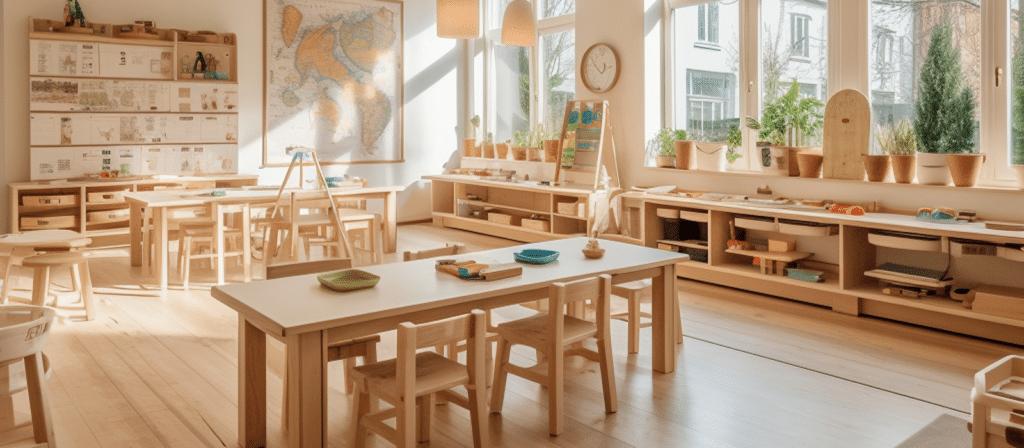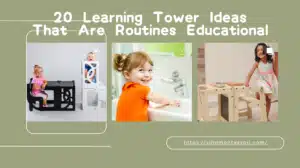Have you ever wondered how Montessori furniture can be both comfortable and functional for young learners? In this exploration, we delve into the world of ergonomic Montessori furniture, where comfort meets functionality to create ideal learning environments.
Ergonomic Montessori Furniture: Designing for Comfort and Functionality means crafting furniture that not only accommodates the unique needs of children but also promotes their physical well-being and enhances the learning experience. It’s about prioritizing comfort and practicality without compromising the principles of Montessori education.
Why is ergonomic design important in Montessori furniture?
Ergonomic design is all about creating furniture that supports the natural movement and posture of the human body. When it comes to Montessori education, this becomes even more crucial as children spend a significant amount of time sitting and working at various activities. It is essential to provide them with furniture that promotes good posture, comfort, and freedom of movement.
Ergonomic Montessori furniture is designed to adapt to the needs of the child, allowing them to sit and move comfortably while engaging in their activities. It takes into account factors such as the height and angle of the furniture, the placement of shelves and materials, and the overall layout of the learning environment. By incorporating ergonomic principles into the design, we can create furniture that not only looks great but also supports the physical and cognitive development of the child.
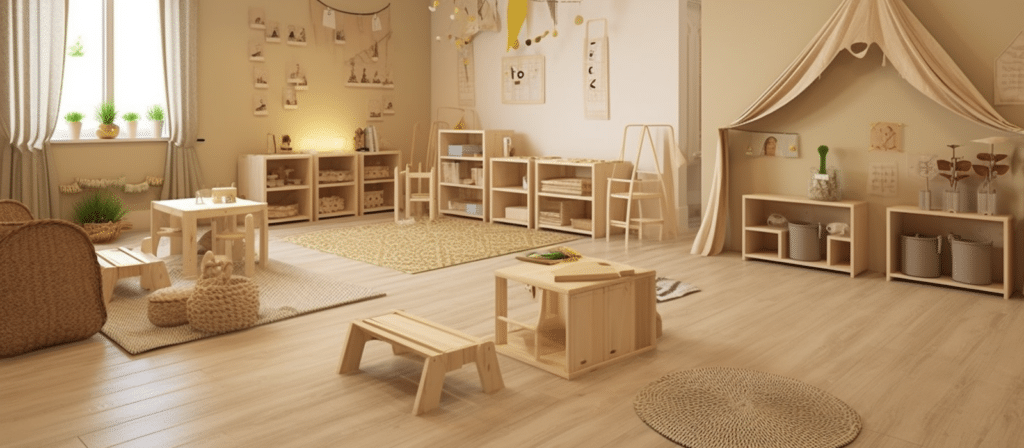
How does ergonomic design enhance the learning experience?
When children are comfortable and at ease in their learning environment, they are more likely to stay focused and engaged in their activities. Ergonomic Montessori furniture provides the necessary support and comfort, allowing children to concentrate on their tasks without distractions.
By promoting good posture, ergonomic furniture helps prevent the development of musculoskeletal issues, such as back and neck pain, which can hinder a child’s ability to concentrate and learn. It also encourages proper alignment of the body, ensuring that children maintain a healthy and balanced posture as they grow.
In addition to physical comfort, ergonomic design also facilitates independence and freedom of movement. Montessori education emphasizes the importance of allowing children to explore and learn at their own pace. Ergonomic furniture enables children to move freely, choose their activities, and work in a way that suits their individual needs. This promotes a sense of autonomy and self-direction, which are essential for fostering a love of learning.
How can ergonomic Montessori furniture be designed for functionality?
Functionality is another key aspect to consider when designing Montessori furniture. It should not only be ergonomic but also practical and adaptable to the needs of the child and the learning environment.
Modularity is one way to achieve functionality in ergonomic Montessori furniture. By designing furniture that can be easily adjusted or rearranged, we can create a versatile learning environment that can accommodate different activities and group sizes. For example, tables and chairs with adjustable heights allow children of various ages and sizes to comfortably engage in their activities.
Storage is another essential factor in functional design. Montessori materials and activities need to be easily accessible to children, promoting independence and self-reliance. Incorporating shelves, drawers, and compartments into the furniture design ensures that materials are organized and within reach, facilitating a smooth and uninterrupted learning experience.
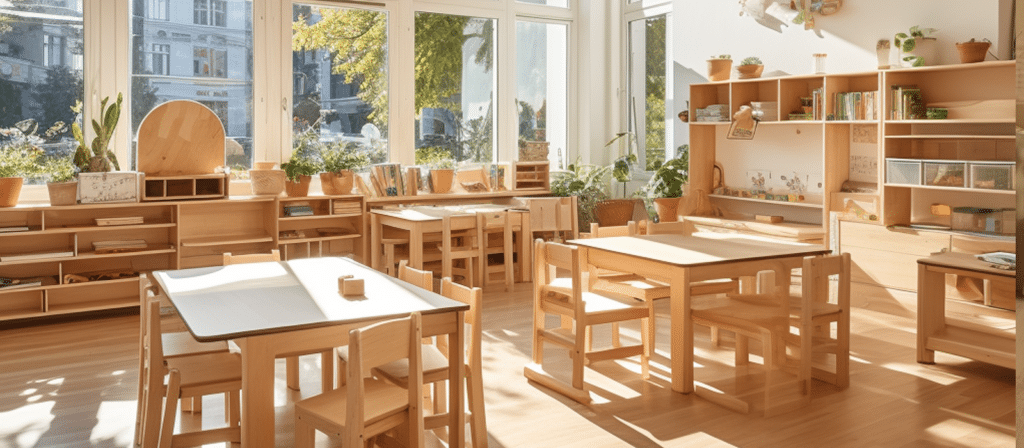
Creating Comfortable Seating Options
One of the key aspects of Montessori furniture design is providing comfortable seating options for children. Whether it is a chair, stool, or floor cushion, the seating should be appropriately sized and adjustable to accommodate a range of ages and sizes. This allows children to sit comfortably and maintain proper posture while engaging in various activities.
Designing Desks and Workstations
In addition to seating, desks and workstations are essential elements of Montessori furniture. They should be designed to be child-friendly, with adjustable height options to accommodate different ages and heights. The work surface should be spacious enough to accommodate various learning materials, promoting organization and ease of use.
Encouraging Movement and Active Learning
Montessori education emphasizes the importance of movement and active learning. Therefore, it is essential to design furniture that allows freedom of movement while ensuring safety. For example, incorporating elements such as rounded edges, non-slip surfaces, and sturdy construction can prevent accidents and injuries while encouraging children to explore and engage in physical activities.
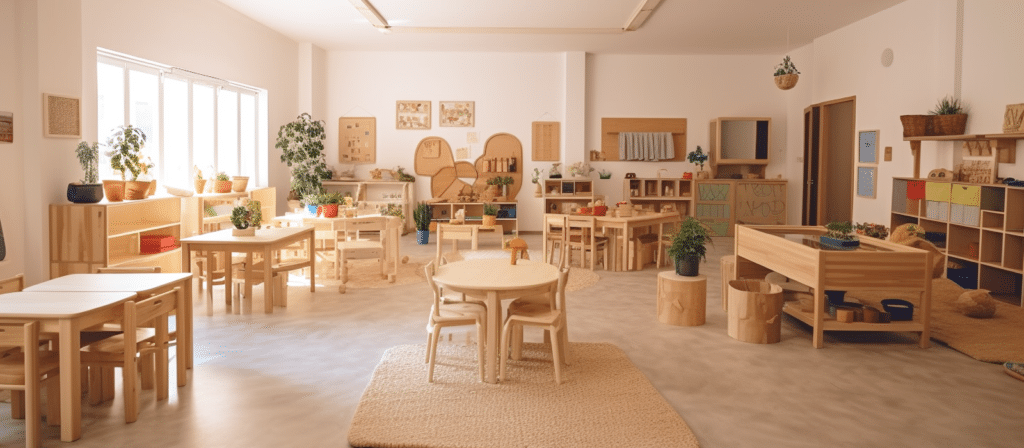
Incorporating Natural Materials
Another important aspect of Montessori furniture design is the use of natural materials. By incorporating materials such as wood, bamboo, or cotton, we create a warm and inviting atmosphere that connects children with nature. Natural materials also contribute to a healthier indoor environment by minimizing the presence of harmful chemicals found in synthetic materials.
Providing Storage Solutions
Organization and orderliness are essential in a Montessori classroom. Therefore, it is crucial to incorporate storage solutions into the design of Montessori furniture. Cabinets, shelves, and cubbies can be integrated to provide designated spaces for children to store their learning materials, promoting independence and a sense of responsibility.
Customization and Flexibility
Every child is unique, and their needs may vary. Therefore, it is important to design Montessori furniture that allows for customization and flexibility. Adjustable features, modular designs, and interchangeable components can accommodate individual preferences and adapt to different learning activities.
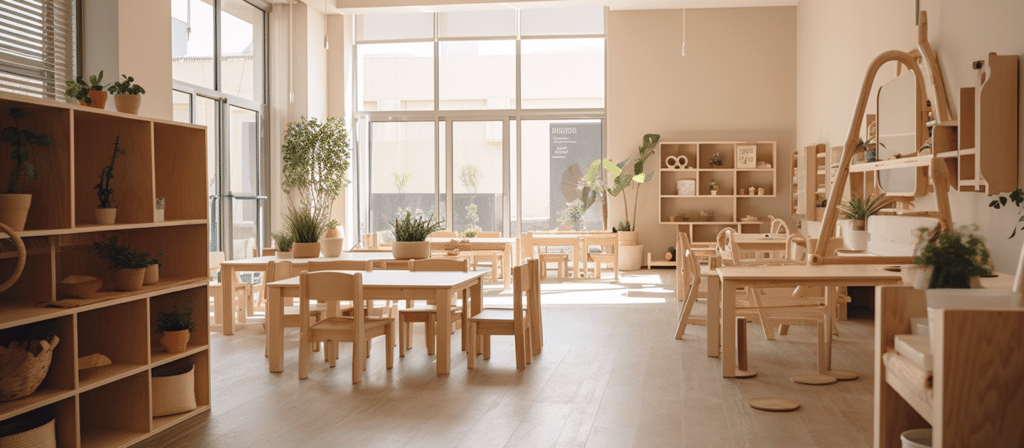
The Benefits of Ergonomic Montessori Furniture
The design principles of ergonomic Montessori furniture offer numerous benefits for both children and educators. Firstly, it promotes better posture and spinal alignment, reducing the risk of musculoskeletal issues. Secondly, it enhances focus and concentration by providing a comfortable and distraction-free learning environment. Lastly, it fosters independence and self-confidence as children are empowered to take charge of their own learning experiences.
Conclusion
Ergonomic Montessori furniture stands as a testament to the thoughtful and holistic approach to education. It marries the principles of Montessori learning with ergonomic design, creating spaces that nurture not only young minds but also young bodies. By providing comfort and functionality, this furniture empowers children to explore, learn, and develop with ease and confidence, setting the stage for a lifetime of joyful and meaningful learning experiences.

